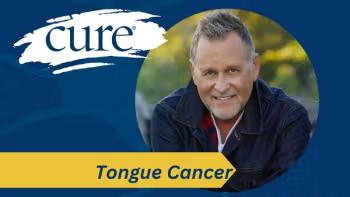
Revolutionizing CAR T-Cell Therapy to Improve Patient Access
Key Takeaways
- CAR T-cell therapy demand is rising, prompting institutions to expand access and reduce care barriers, exemplified by Vanderbilt-Ingram Cancer Center's outpatient center.
- Dr. Oluwole emphasizes improved access for underserved communities by reducing hospital stays and enhancing patient monitoring.
Dr. Olalekan O. Oluwole, discusses treating patients from underserved communities with CAR T-cell therapy, as well as highlighted the therapy's evolution.
Due to notably positive data with the treatment of CAR T-cell therapy across hematologic malignancies, the demand for the treatment approach continues to rise. Therefore, institutions across the country are working to expand access and reduce barriers to care. For example, Vanderbilt-Ingram Cancer Center, recently launched an outpatient CAR T-cell center for this patient population, aiming to take a step forward in making this treatment more accessible.
In order to delve deeper into this topic, Dr. Olalekan O. Oluwole, malignant hematologic disorders treatment specialist,
Oluwole works at the Vanderbilt Hematology Clinic, which is part of the Vanderbilt-Ingram Cancer Center, located in Nashville, Tennessee. He is also an associate professor of medicine in the Division of Hematology Oncology, Department of Medicine, at Vanderbilt University Medical Center.
CURE: Can you speak to any improvements in access to care, especially for patients from rural or underserved communities, since the launch of the Outpatient Center?
Oluwole: One thing that is really painful for us to see is that many who really need this treatment are unable to get it. Of course, there are multiple reasons for this, but I can tell you that the issue of capacity was an earlier concern. Can you imagine if every patient was put in the hospital for 14 or 16 days? That is a lot of hospital bed space, and those beds would not be available for others, such as in the emergency room, and we know how crowded those are nowadays.
Our method of using one-third as many hospital days clearly frees up those resources, so we do not have any capacity issues whatsoever. I know there are some other parts of the country where that is an issue, so that may be one barrier that can be easily overcome. The second thing is that some of the close monitoring interventions that we do actually mean that patients end up tolerating the treatment better. One issue that we constantly faced was that patients were unwilling to spend the whole month around the hospital, which was the federal requirement when these therapies were started.
Now, we've been able to shave that monitoring period down to about two weeks, with a few changes here and there. So, there is a promise that those who are doing well may be able to be discharged from the treatment center a little bit earlier. Of course, they will still be monitored, but they do not have to stay within a mile or two of the hospital. This change would facilitate more patients being able to get CAR T-cell therapy because they no longer need to think about being away from home for a month; it could be two weeks and maybe a few extra days here and there.
Looking ahead, how do you see outpatient models evolving for CAR T-cell therapies, especially as new indications and products continue to emerge?
I think it's fair to say that outpatient therapy is the future. Patients' quality of life is better, and as investigators, if we do our due diligence to learn about these products, understand their toxicity profiles, and deploy appropriate, and even preventative, intervention strategies, it will be possible. This may include using telemedicine rather than bringing the patient to the clinic. It may also include wearable devices that give us their vital signs in real time.
I think these are technologies that are already available; we just have to put them together in a way that is patient-centered. If we do that well, preserving their quality of life is actually possible. They will only spend a minimum number of days in the hospital, and then they'll be back to their businesses and families, and that is really the best we can do.
As CAR T-cell therapy continues to demonstrate long-term survival benefits, how do you envision its role evolving across both cancer and non-cancer conditions in the years ahead?
Of course, CAR T-cell therapy is going to expand. Something that works this well is not going to be ignored, and so many people will benefit from it. There are people alive today who should have died within six months, but they are now alive 10 years later. When we see things like this, that people can be cured, we have to anticipate that this will expand to solid tumors like those in the lungs, colon, and breasts. It will also eventually be a form of cell therapy for autoimmune disorders that have been refractory to other therapies.
We have actually found that these CAR T-cells also work in that instance. By the time you think about what other diseases and conditions can benefit from this therapy, the number can only increase, and it is literally impossible for us to put that many patients in the hospital. So it's safe to say that outpatient therapy is the way this will roll out in the future.
Transcript has been edited for clarity and conciseness.
For more news on cancer updates, research and education,




